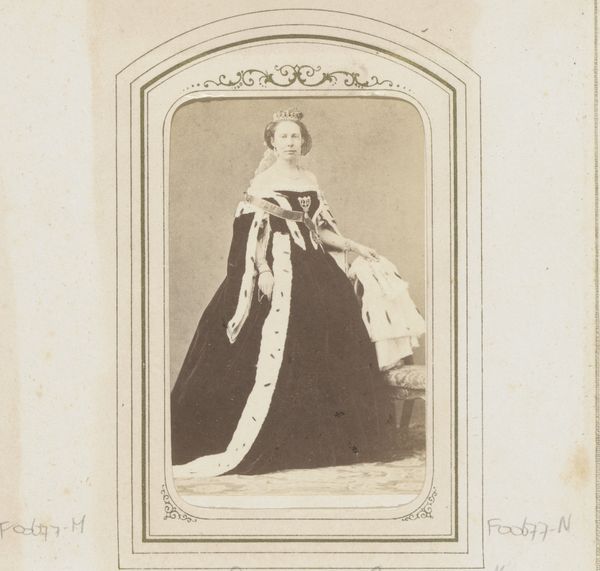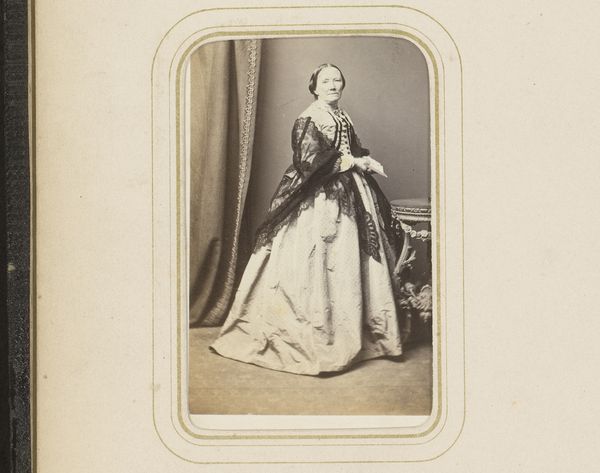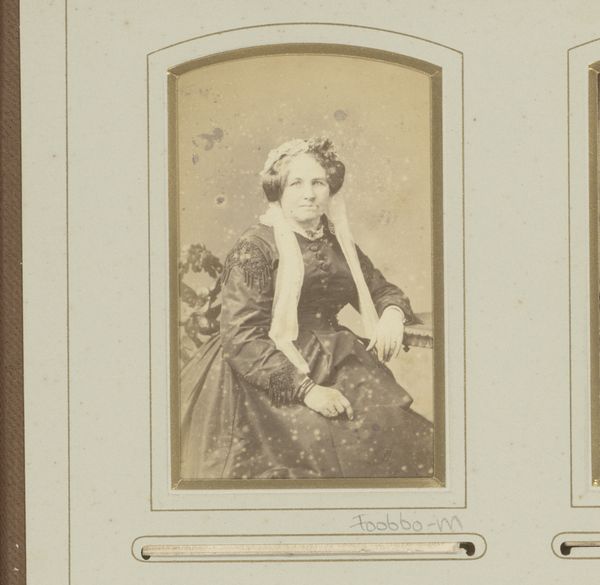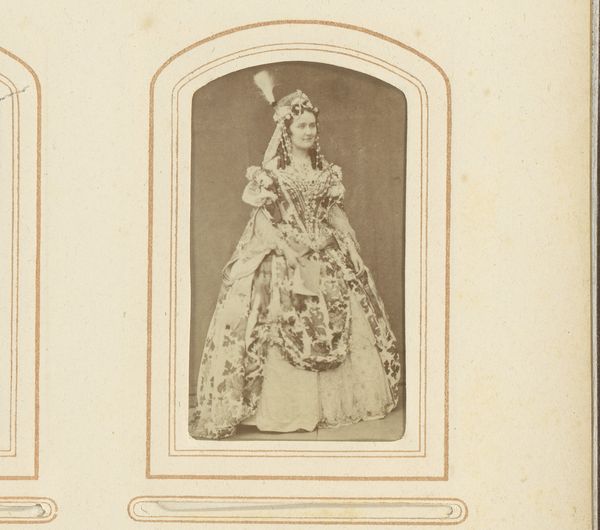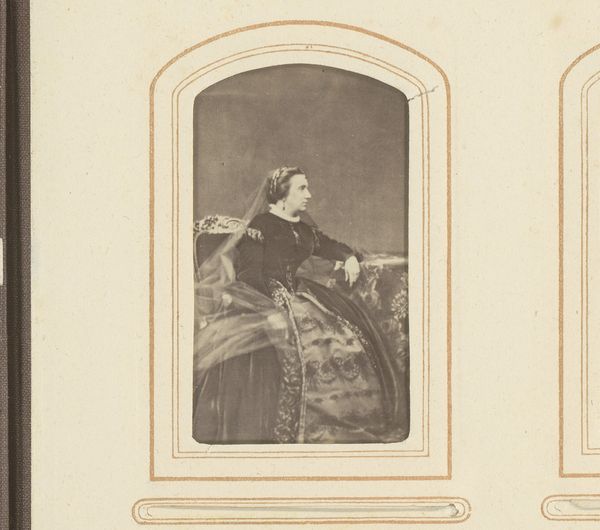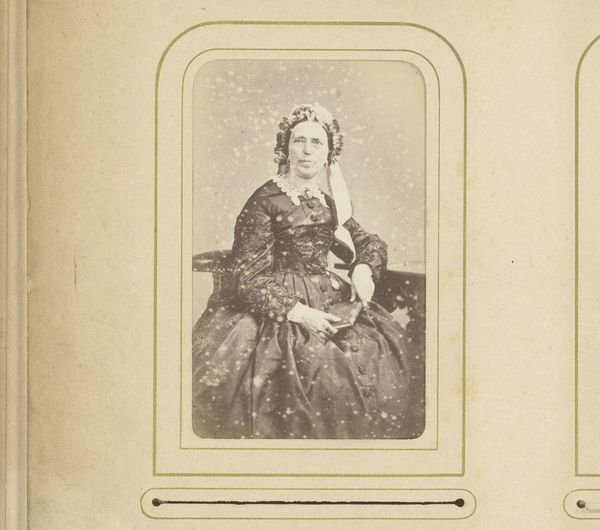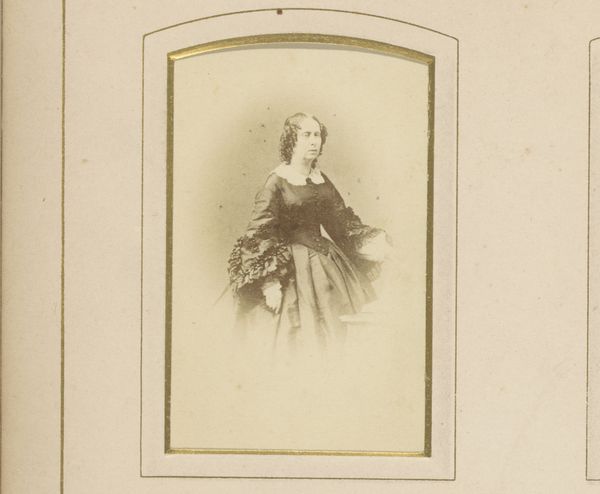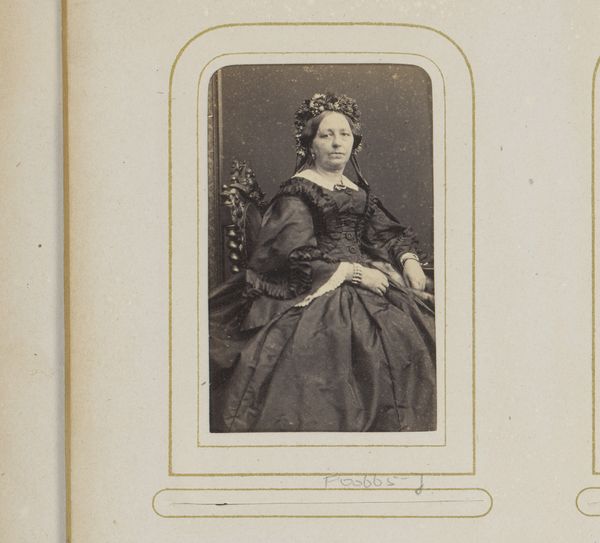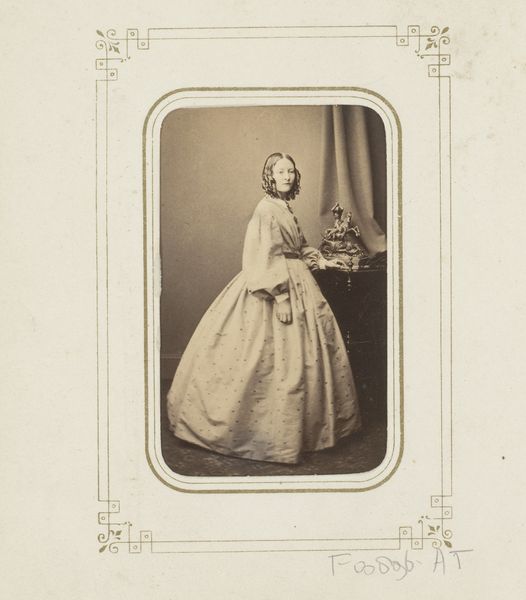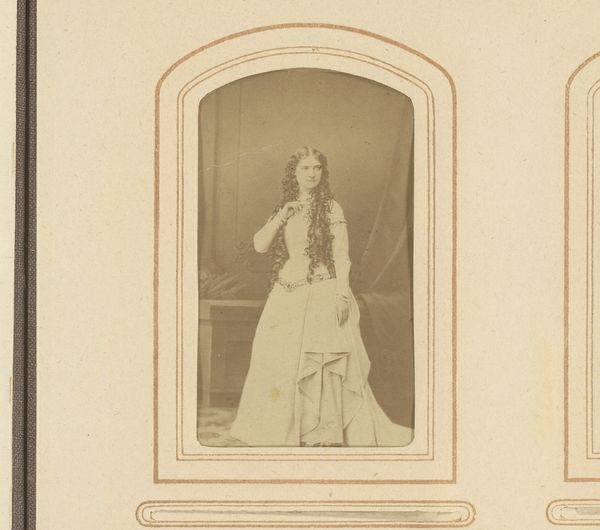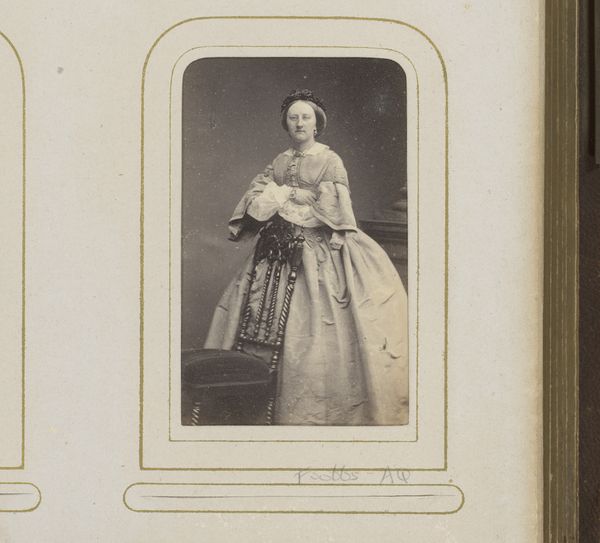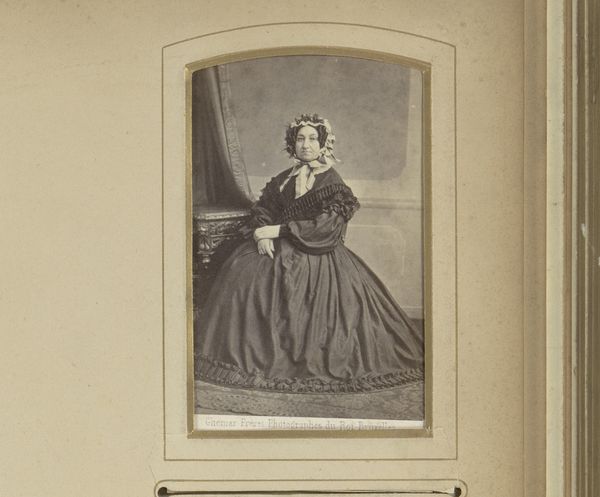
photography
#
photography
#
genre-painting
#
realism
Dimensions: height 104 mm, width 64 mm
Copyright: Rijks Museum: Open Domain
Editor: Here we have Constantin Schwendler’s "Portret van een staande vrouw," a photograph from between 1865 and 1894. The woman's ornate dress really captures my attention; what can you tell me about it? Curator: That dress! It speaks volumes. The symbolism embedded in clothing from that period – the layering, the fabrics, the ornamentation – can reflect social standing and aspirational identity. Have you noticed the contrast between the soft fabric of the upper portion and the rigid layers of the skirt? What feelings does this contrast trigger for you? Editor: I think the stiffness is restrictive, maybe symbolizing the limitations placed on women at the time? Curator: Precisely! And consider the roses. Are they merely decorative, or do they carry coded meanings related to beauty, love, or even ephemeral nature of youth? Think about how photographic portraits evolved: what sort of person could afford such luxury at this time? What message might they try to convey about themselves? Editor: I guess a photograph like this wasn't just about capturing a likeness but projecting a very particular image of oneself. I hadn’t really considered that before. Curator: Indeed. Photography from this era frequently functioned as both art and declaration of identity. By visually embedding status and virtue within a single captured moment, such a portrait acted as a powerful symbol. So, what did you learn from seeing it in a different light? Editor: That an image contains worlds if you know how to look. Thanks!
Comments
No comments
Be the first to comment and join the conversation on the ultimate creative platform.
